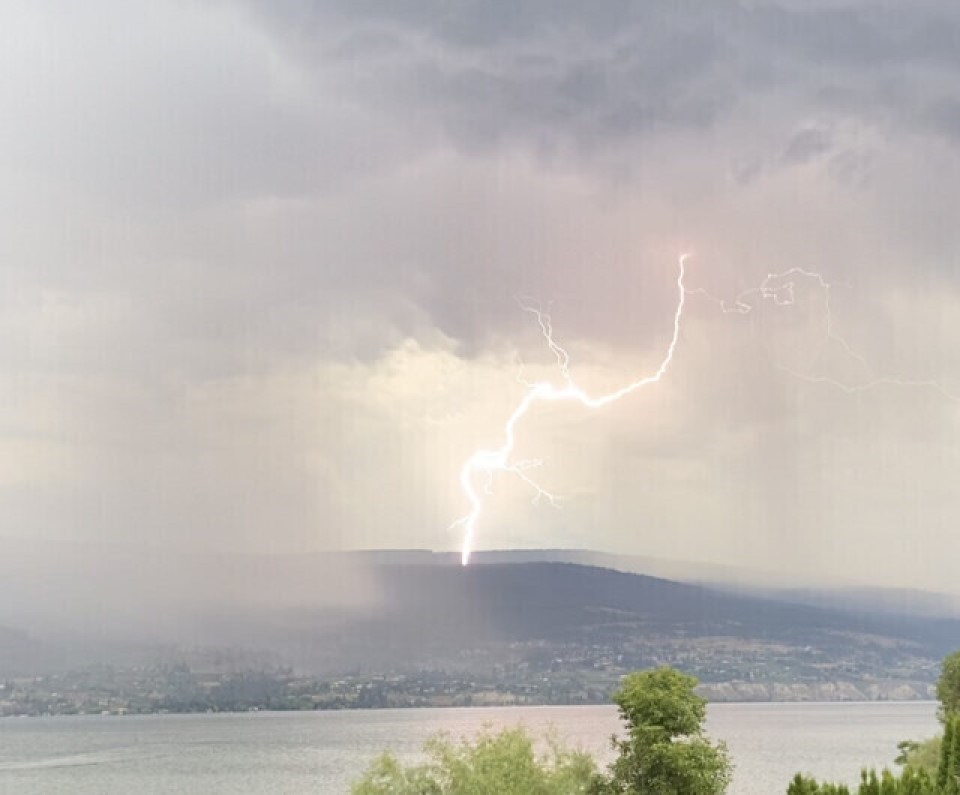A wildfire expert says rapid detection and initial action to tackle fire starts is important as climate change spurs the hot, dry conditions which result in more intense fires.
Mike Flannigan, wildfire researcher at Thompson Rivers University, was one of two presenters who spoke on the future of wildfires in B.C. during the Southern Interior Local Government Association conference Thursday.
“In terms of impacts, B.C. is at the pointy end of the spear. We've been hit by freight trains in 2017, 2018, 2021, 2023,” Flannigan said. “Yes, we're going to get hit by more freight trains — and they're going to be more intense, more frequent.”
Flannigan said extreme fire weather — hot, dry, windy days with lots of lightning — is the “key driver” of the increase in wildfires. While the number of human-caused fires are decreasing, last year, more than 70 per cent of B.C.'s wildfires were caused by lightning.
He said the warmer it gets, the more lightning is expected.
“More lighting means more fires if all things are equal — but actually things aren't equal, as our fuels will be drier,” he said, adding as the atmosphere warms, moisture is sucked out of the dead vegetation on the forest floor.
He said the dryer the fuels, the easier it is for fires to start and spread. When there is more fuel available, the fires burn at greater intensity.
“It’s almost impossible to extinguish a large, high intensity fire. Once it gets bigger than a football field or soccer pitch, and it’s hot, dry, windy, the horse has left the barn. It’s too late,” he said. “It’s best to get it when it’s still small — that’s why detection is so important.”
Flannigan said education, fire bans and forest closures are effective at reducing human-caused fires, which allows for resources to be more readily deployed to lightning-caused fires.
He noted BC Wildfire Service puts out about 95 per cent of fires while they are still small, but it’s the other five per cent which can become big problems.
“If you get 100 new fire starts in a day, you don’t have 100 crews, you don’t have 100 helicopters, and some of those fires will not be actioned,” he said.
He said rapid detection of fires and initial action is important, especially on hot, dry, windy days. Flannigan pointed to the BC Wildfire Service app, which allows users to upload a picture of any suspected fire starts giving crews the visual information they need to best respond.
He said it is important to lean on local and Indigenous knowledge to help fight wildfires
“We are moving in that direction,” Flannigan said, adding he sees room for optimism in the more cohesive and coordinated approach to wildfire after last year’s fire season.
He said more should be spent on prevention and mitigation, including FireSmart initiatives, and added every community should have an emergency management plan which includes climate change.
"Fire is a multi-faceted issue. ...There is no quick fix, we have to have multiple approaches to deal with our wildfires," Flannigan said.
Murray Wilson, a retired forester, also took to the SILGA stage to present on wildfires, agreeing fire starts have to be hit “hard and fast” before they become too large to be put out by crews.
However, Wilson advocated for active forest management to help combat wildfires, noting the amount of logging in B.C. has been decreasing over the past few decades.
"That has some big impacts — that means that we are making our forests older, and less accessible. That means we lose a lot of expertise in fighting fires. I would argue that our loggers are some of the best people in the world at fighting these fires,” he said.
“Preservation doesn’t equal protection — it really doesn’t.”



